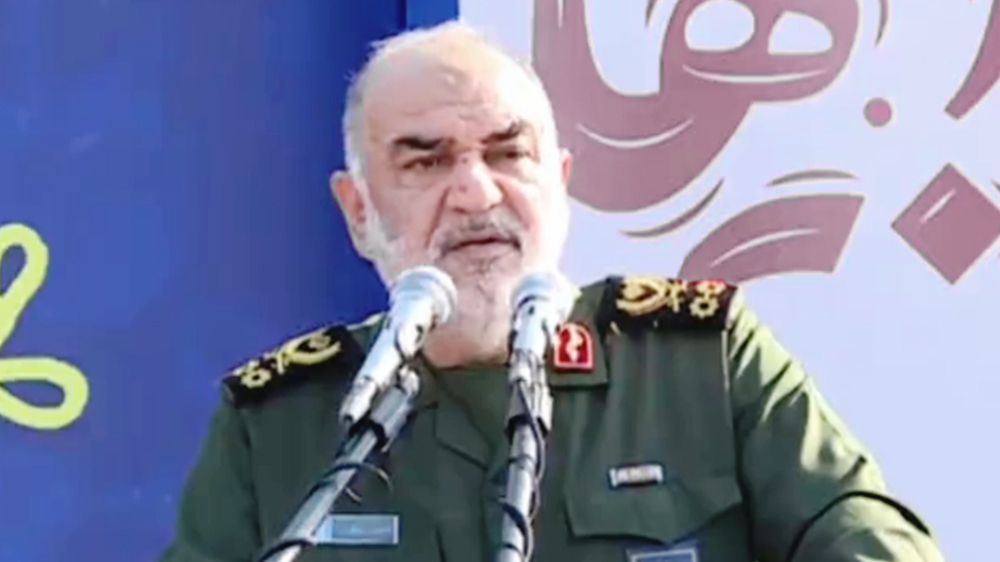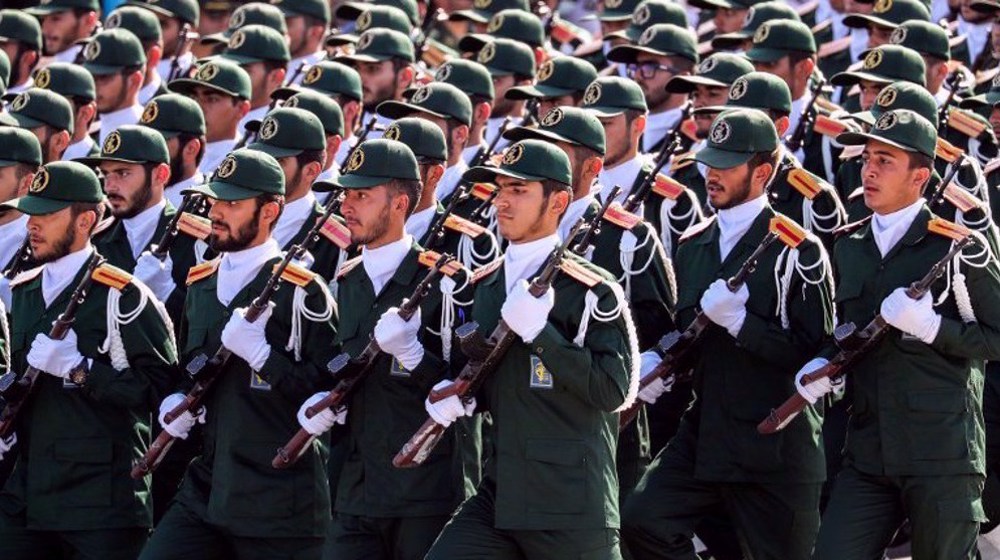IRGC reveals details of revenge attack on terrorists
The Islamic Revolution Guards Corps (IRGC) has released new details on its missile strike on the positions of terrorists behind a recent attack in southwest Iran.
The early Monday blitz targeted terrorist positions to the east of the river Euphrates, near Albu Kamal town on Syria’s eastern border with Iraq.
The IRGC said the attack was a response to the “cowardly” act of terror during a military parade in the southwestern city of Ahvaz on September 22, which killed 25 people and injured 69 others.
“We ensure our dear compatriots that, as it has been said repeatedly, the armed forces view Iran’s national security as their red line” and the IRGC, as well as the country’s Army, police and intelligence arms, would respond to enemy violations with an “iron fist,” it added.
The operation, dubbed The Muharram Strike, saw the IRGC’s Aerospace Force fire a total of “six medium-range ballistic missiles” from western Iran at targets 570 kilometers (355 miles) away, it said.
American military forces are also stationed in Albu Kamal, which is located in Syria’s Dayr al-Zawr Governorate.
Read More: Iran’s ballistic revenge annihilates terrorists
Iran’s Fars News Agency said the rockets belonged to the Qiam and Zolfaghar families of domestically-developed advanced missiles.

The liquid-fueled Qiam missile weighs around six tonnes and is capable of delivering its 700kg high explosive warhead over a maximum range of around 800km.
Zolfaghar missiles, meanwhile, are an upgraded version of the precision-guided Fateh family. Armed with submunition warheads, Zolfaghar missiles can rain explosives over targets 750km away.
Both missiles can be fired from concealed underground silos as well as mobile launchers.
Immediately after the missile attack, the IRGC flew no less than seven armed drones to further pound the headquarters and gatherings of the “mercenaries of global arrogance,” according to the statement.
The Daesh terror group and the al-Ahwaziya militants, both of which have known links to Saudi Arabia, claimed responsibility for the attack in Ahvaz.
The IRGC said the missile barrage killed and injured many of the leaders and planners of the terror attack and destroyed their infrastructure and ammunition depots.
Last year, the IRGC mounted a similar attack against terrorist positions in Dayr al-Zawr to avenge Daesh-claimed attacks that killed 18 people and injured 50 more in the capital Tehran.
Israel admits assassinating Hamas leader, vows to inflict same fate on Yemeni fighters, people
VIDEO | Yemeni forces repel US-British attack, down F-18 Jet
Iran’s capabilities vast; enemy’s ‘maximum pressure’ policies all failed miserably: Senior official
Iran’s economy grew 2.7% y/y in Sep quarter: CBI
VIDEO | Freelancers in Gaza strive to stay online amid genocide
Mikati demands Israel's withdrawal from south Lebanon
Yemeni army strikes Israeli military sites with drones
‘Clock ticking’: UNRWA slams unjustifiable killing of children in Gaza










 This makes it easy to access the Press TV website
This makes it easy to access the Press TV website